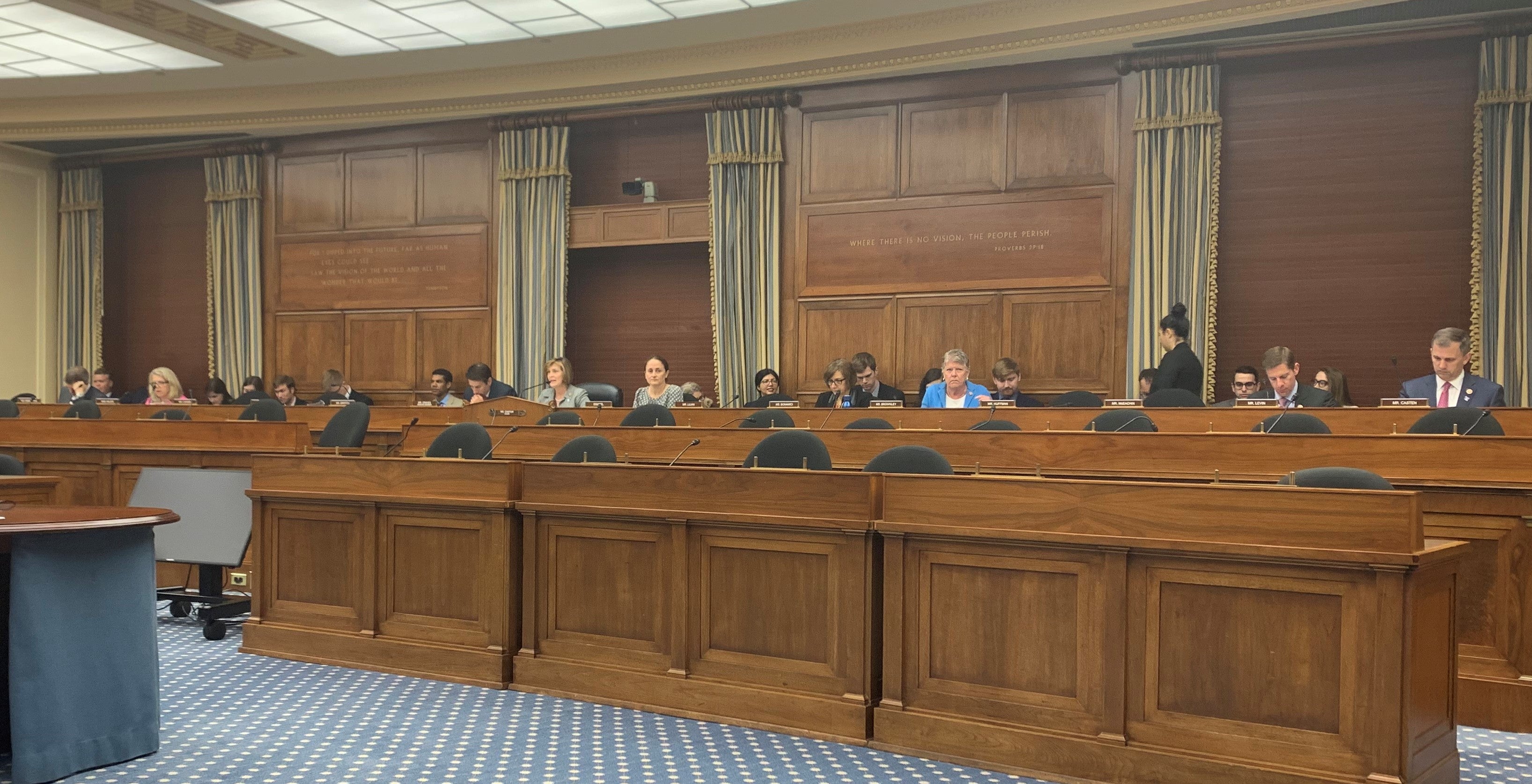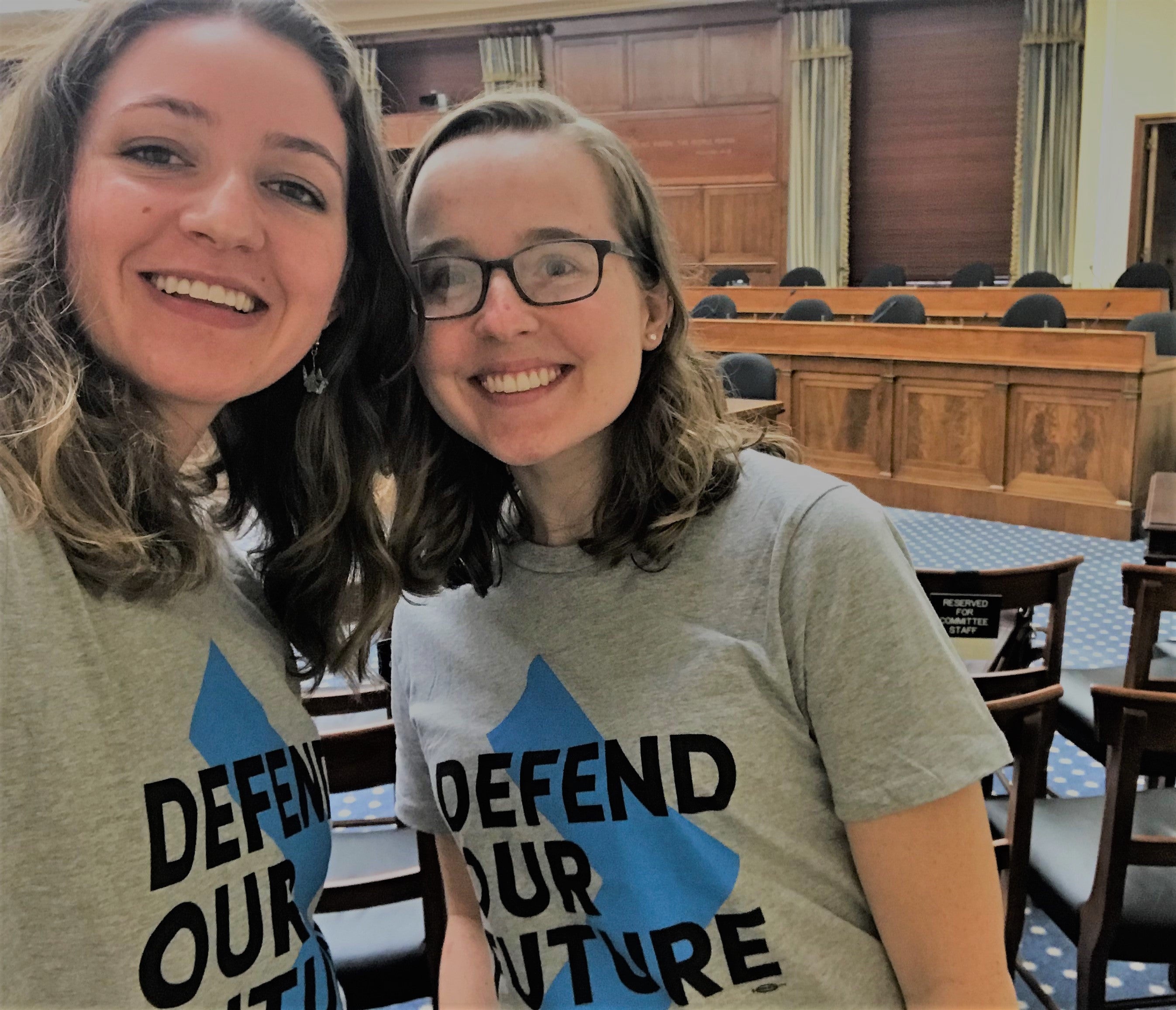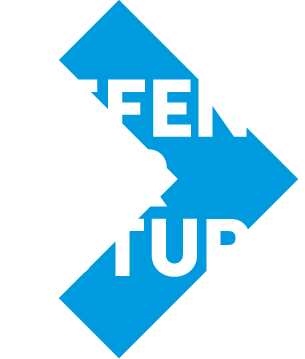
On June 13th, several interns and I had the awesome opportunity to attend the House Select Committee on the Climate Crisis’ hearing, “Solving the Climate Crisis: Ramping Up Renewables.” And of course, we were sporting our Defend Our Future T-shirts, making the statement that we support our representatives who pledge to advance the transition to 100% clean energy. Hearing witnesses included the following: Abigail Ross Hopper, Esq., President and CEO of the Solar Energy Industries Association; Tom Kiernan, President and CEO of the American Wind Energy Association; Katherine Hamilton, Chair of 38 North Solutions; and Christine Tezak, Managing Director of Research at ClearView Energy Partners, LLC. This was one of the best hearings I’ve attended because, unlike many other Congressional hearings, yesterday’s hearing proposed concrete solutions for transitioning our economy to more renewables. We left the hearing with policies and proposals, such as green banks and technology-neutral tax credits, and ideas that we can use to inspire others to believe that a clean and just economy is possible. Committee Chairwoman Representative Kathy Castor (FL-14)’s opening statement summed up the positive atmosphere circulating around the hearing room, “The climate crisis is daunting. But the opportunities we have in front of us for good jobs, clean air and a just future are boundless… We have the tools and technology we need to succeed. We just need to decide to do it.”
Before I dive into several key takeaways from the hearing, I think it would be helpful to define several clean-tech-related terms that were used frequently throughout the hearing:
• Solar Investment Tax Credit (ITC):
Federal policy supporting the growth of solar industry, providing for a 30% tax credit for solar systems on residential and commercial properties.
• Renewable Electricity Production Tax Credit (PTC): Federal policy providing for an inflation-adjusted per-kilowatt-hour tax credit for electricity generated by wind, geothermal, and solar systems.
• Renewable Portfolio Standards: Adopted by states or corporations and requires that a certain percentage of electricity comes from renewable sources.
• Green Bank: The Organization for Economic Co-operation and Development (OECD) defines it as “a public, quasi-public or non-profit entity established specifically to facilitate private investment into domestic low-carbon, climate-resilient infrastructure.”
• Community Solar Projects: Solar power plant facilities with electricity is shared by multiple households.
• Cal ISO Today: an app including features that allow users to monitor electricity prices and view real-time demand of electricity.
Here are the important takeaways:
1) The renewable energy industry is taking off. Since the enactment of the ITC in 2006, the solar industry has skyrocketed, growing by more than 8,600%, creating thousands of jobs, and fueling the U.S economy. Hopper described the ITC as the “most effective clean energy policy.” Kiernan highlighted the importance of policies like the PTC and renewable portfolio standards, which he stressed will continue to be necessary to expand wind energy generation in the U.S., and with the added benefit of bringing down costs for consumers. Likewise, Hamilton noted that financial instruments – such as bonds and green banks – will continue to be crucial for green energy development. Finally, Tezak described what she often refers to as the three dimensions of energy security: adequacy, attributes, and affordability, all three of which need to be addressed in order to avoid becoming a constraint on policy.

2) We have the tools, strategies, and programs to transition to a 100% clean economy: it is not a matter of whether it’s feasible, it’s a matter of us all making an intentional choice to #ActOnClimate. Kiernan discussed the importance of incorporating key stakeholders in the transition. For example, he praised Rhode Island, Maryland, and Massachusetts governments for engaging with the private sector through the procurement of offshore wind as an effective strategy. Green banks were another hot topic from the hearing. After being questioned by Representative Julia Brownley (CA-26), Hamilton said a major benefit of green banks, which operate well as private-public partnerships, is that they cover many projects that traditional banks won’t, even when they make sense for consumers. She added that returns on projects covered by existing green banks have been very successful. Representative Mike Levin (CA-49) described California’s ISO Today, an innovative application that has engaged and informed electricity consumers. This is something that other states could certainly replicate.
3) Renewable energy can benefit low-income communities and communities of color – if implemented properly. In an effort to dispel the common myth that a transition to a renewable economy would place a major burden on underrepresented communities (the very communities that have, and continue to be, disproportionately harmed by the siting of fossil fuel and other pollution-producing facilities), Representative McEachin (VA-4) asked Hopper to share her input on how to make the transition an inclusive one. Hopper suggested that the federal government play a role in workforce development in jobs ranging from construction to engineering to ensure that people from all backgrounds have an opportunity to benefit from the wealth creating opportunities resulting from the transformation of our energy system. Hopper also pointed out the importance of initiatives like community solar projects in providing access to electricity generated by renewables to people who aren’t homeowners.

That’s a wrap on the Ramping Up Renewables hearing! If we organize, get out the vote, and advocate for clean energy policies, we WILL get to #100CleanEnergy together. The future is bright.



